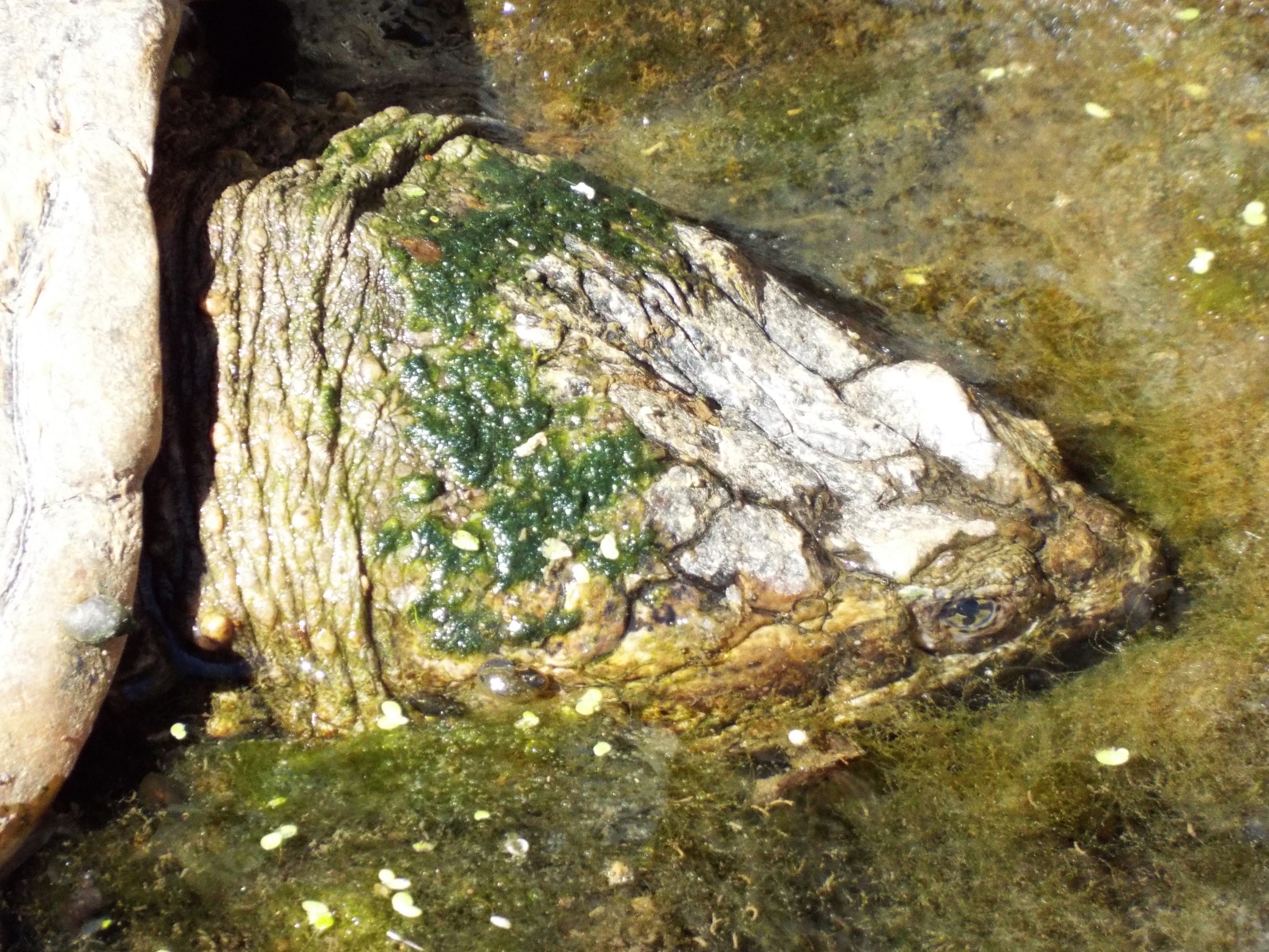
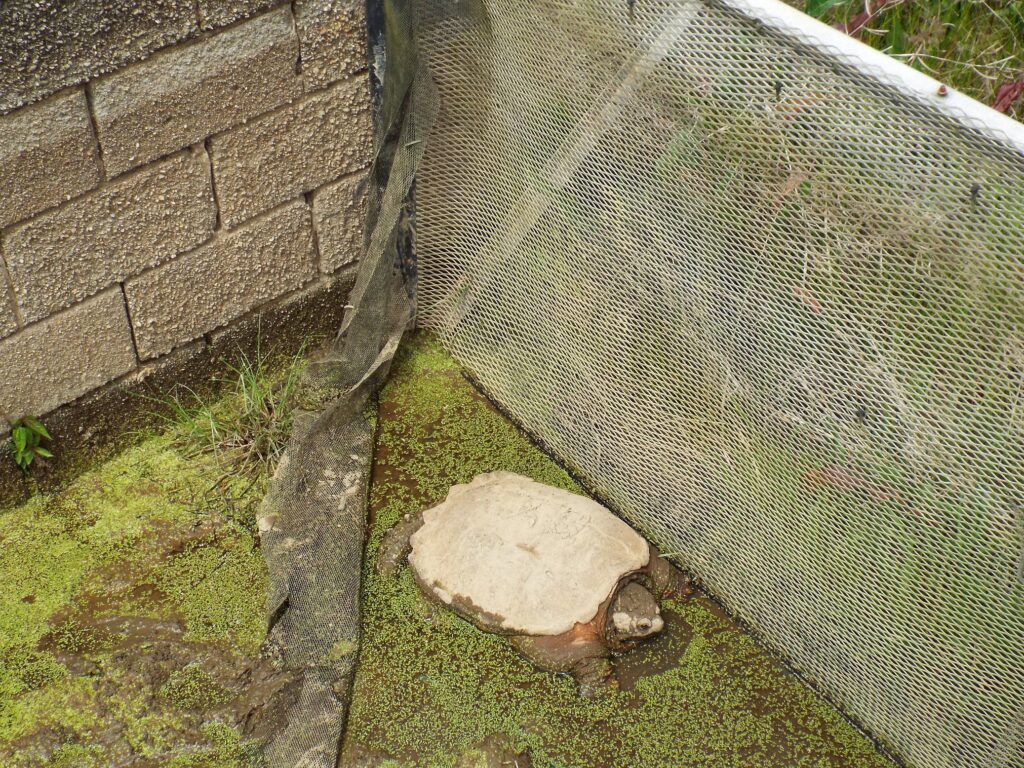
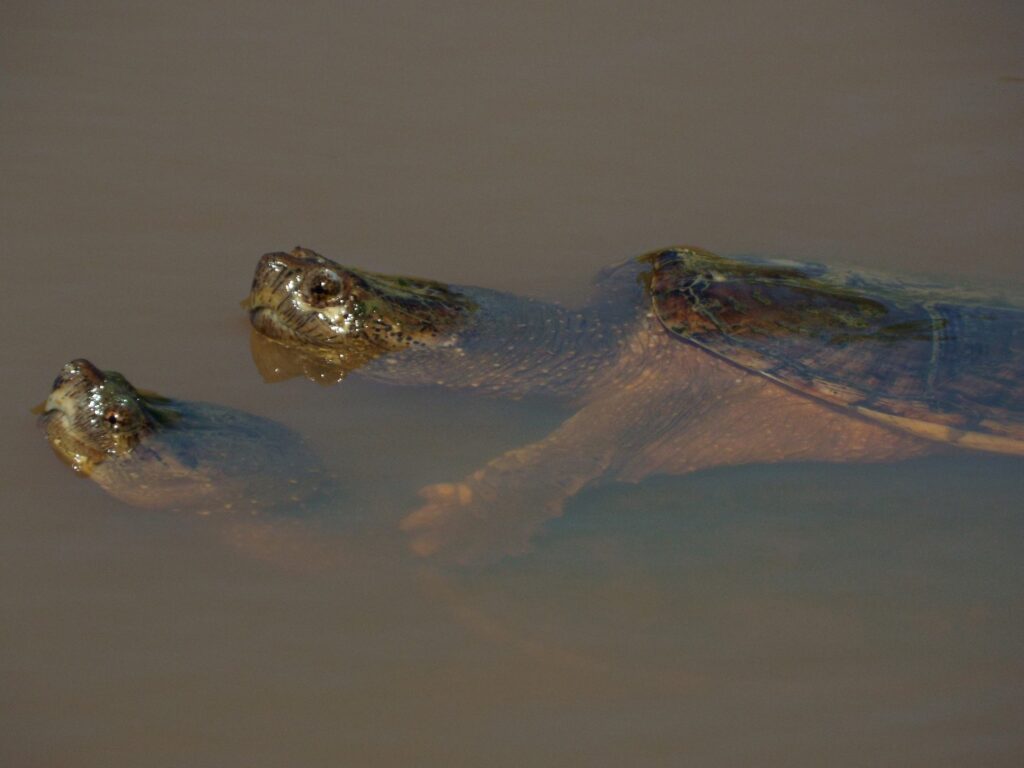
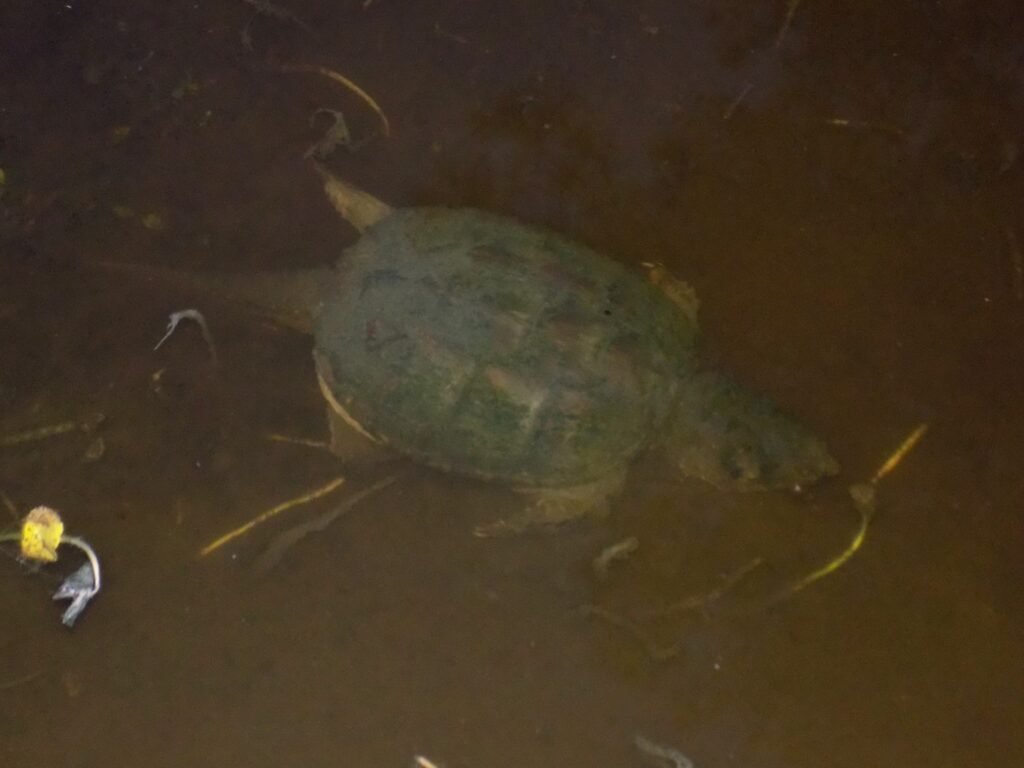
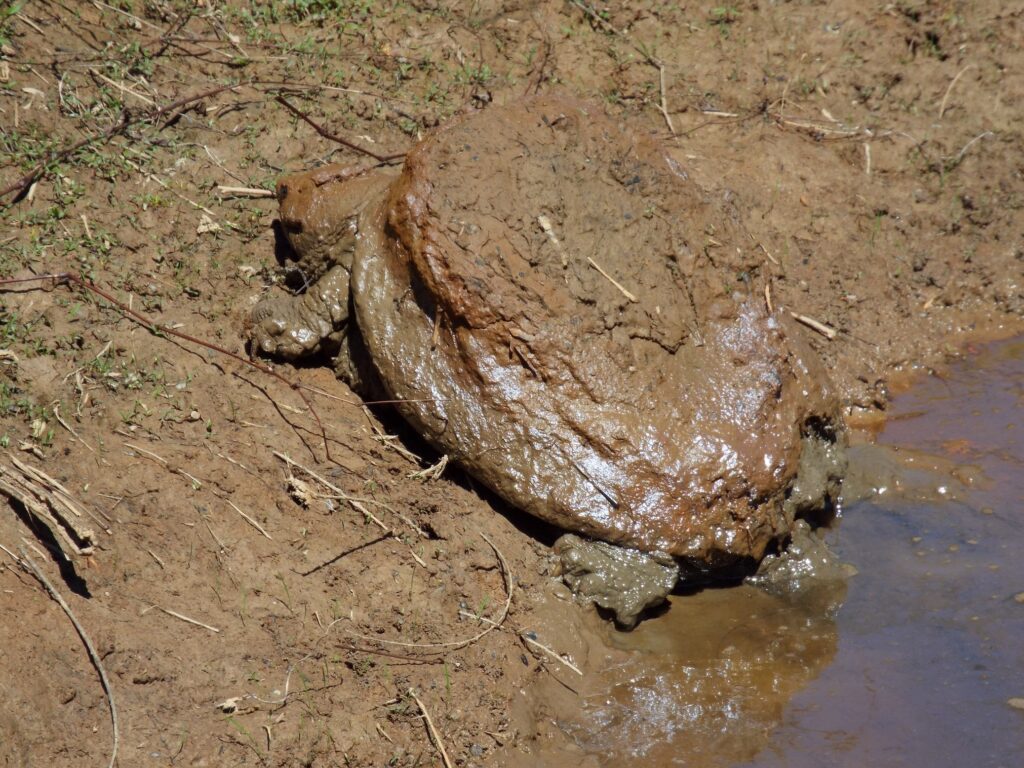
This week for Flora and Fauna Friday it’s a prehistoric looking predatory turtle: the Eastern Snapping Turtle (Chelydra serpentina).
The Eastern Snapping Turtle is our largest non-marine turtle here in the Lowcountry. They can exceed 50 pounds in weight and a foot and a half in shell length but are usually closer to 20 pounds and a foot long at maturity. Snapping Turtles are easy to ID at any distance. Their shells are a clayey-gray to murky-brown with three shallow keels down the back and are often coated in a layer of mud or algae. Snapping Turtles always look too big for their britches (and act like it too) with their wrinkly gray skin pouring out of their shell. In my opinion, from the front they look like they’re wearing an oversized wool sweater, turtleneck of course. They have wide webbed feet with long claws, broad shoulders, and the long, scale-studded tail of a dragon.
Snapping Turtles are an aquatic species adapted to shallow waters. They can be found in almost every significant body of standing water. Snappers are omnivorous but preferentially feed on meat and arthropods. They will eat anything and everything small enough that enters the water. Snakes, crayfish, ducklings, fish, worms, frogs, carrion, smaller turtles, you name it, it’s on their menu. Snapping Turtles are rarely seen on land and they hardly ever bask. However like all aquatic turtles, they are most often spotted crossing roads in spring and summer as they move between wetlands or seek nesting habitat.
Snapping Turtles are best known for their bad attitudes. If you’ve ever tried to remove one from a swimming pool or tried to help a little old turtle cross the road, you know what I’m talking about. It’s an event that most often involves a shovel, a bucket, an audience, and a lot of hollering. When approached, a Snapping Turtle out of water will assume a bulldog stance, turn to face you, and then proceed to mercilessly bite anything that gets within 6 inches of its face. As mentioned before, they’re too big for their britches. So they can’t retreat into their shell like a normal turtle. In order to compensate for their excess of heft, they’ve become violent little buggers.
However, there’s a trick to safely and efficiently moving a Snapping Turtle. If they’re small enough, you can stick your hands above their hind legs, palm up, and pick them up by the shell. If they’re a biggun, you have to run around the back of them, put your hands the same as before, but then walk them like a wheelbarrow out of the way. Alternatively, you can try to sandwich their back-half between two hands to lift them. However, never pick up an adult Snapping Turtle by its tail, you can damage their spinal cord that way. Also a word of caution, don’t try to pick up a Common Snapping Turtle in the chainsaw hold that folks use on Alligator Snapping Turtles. Common Snappers can, and will, still bite you.